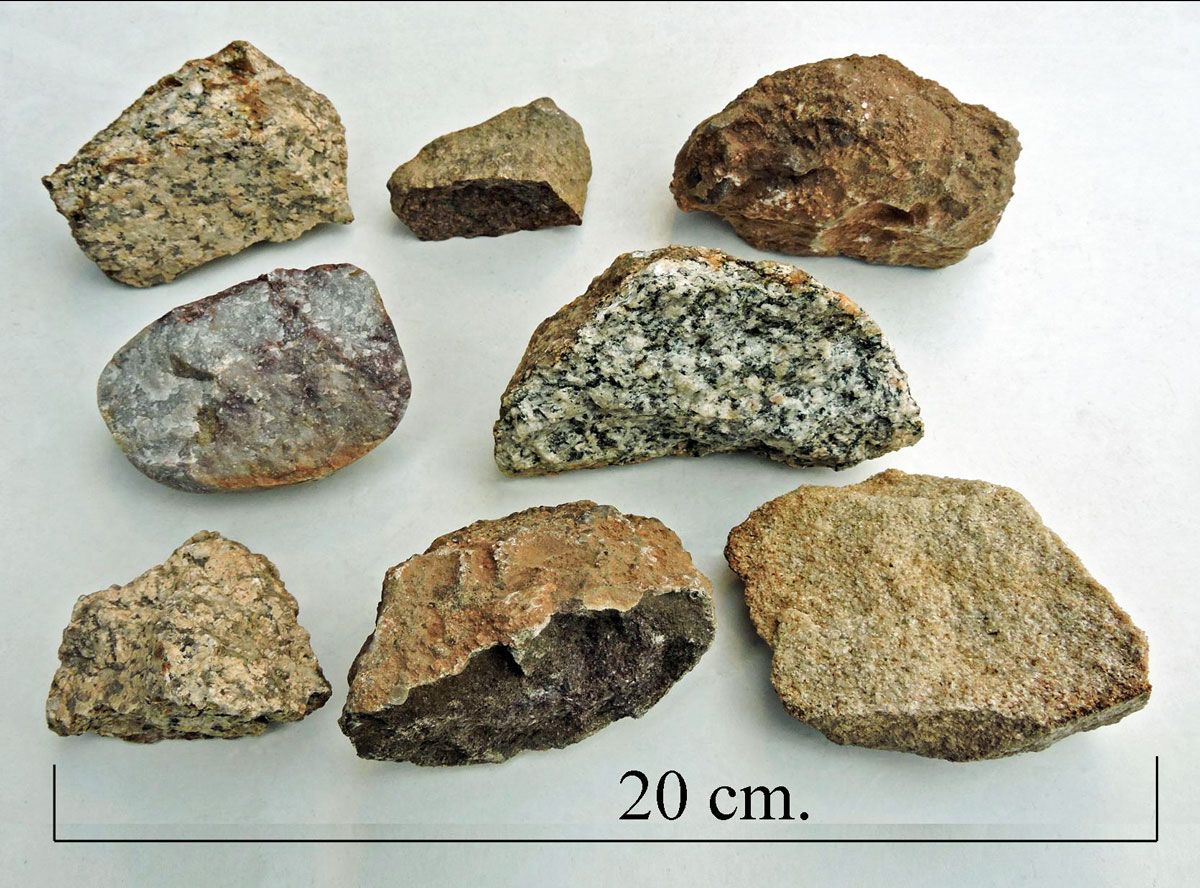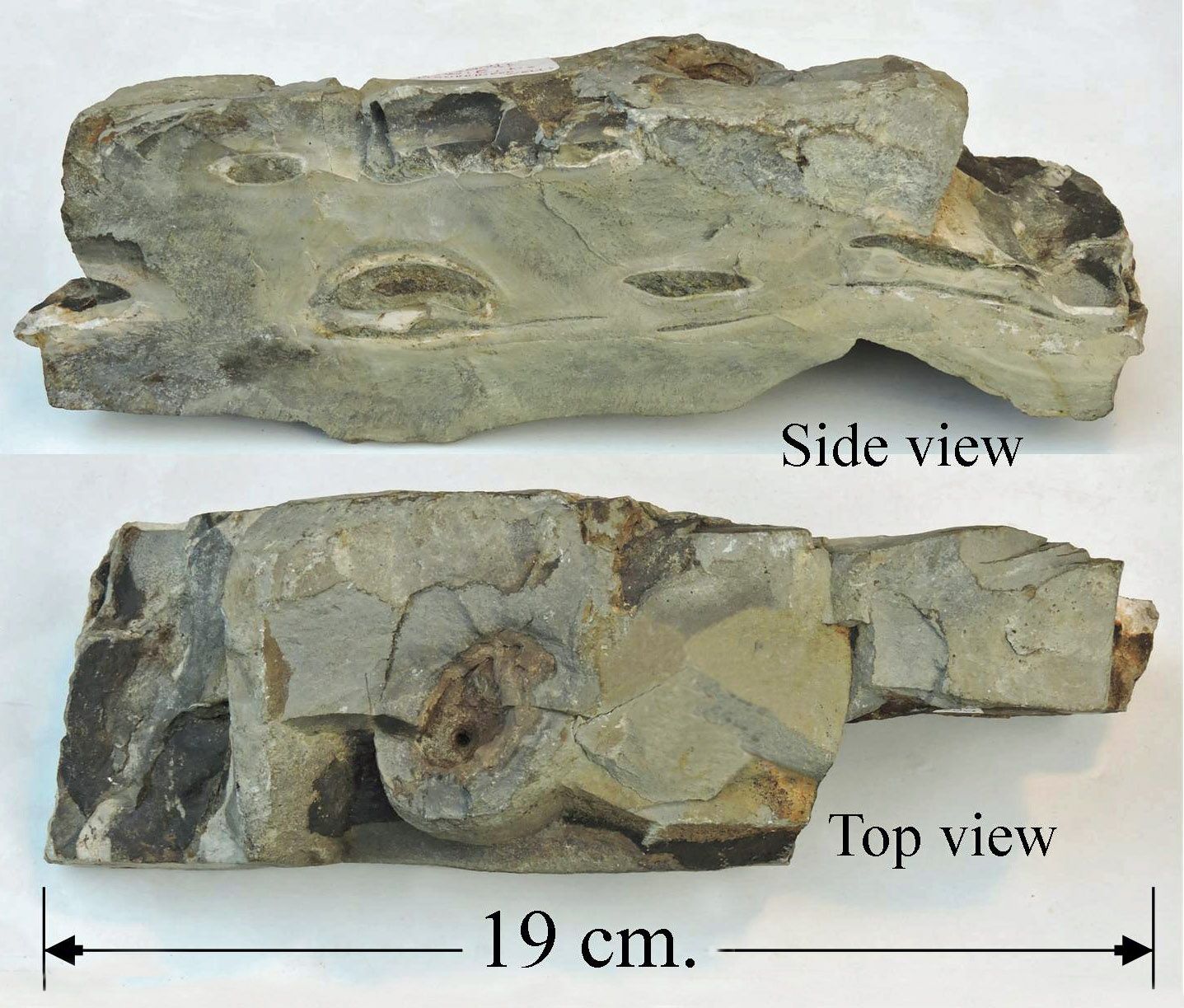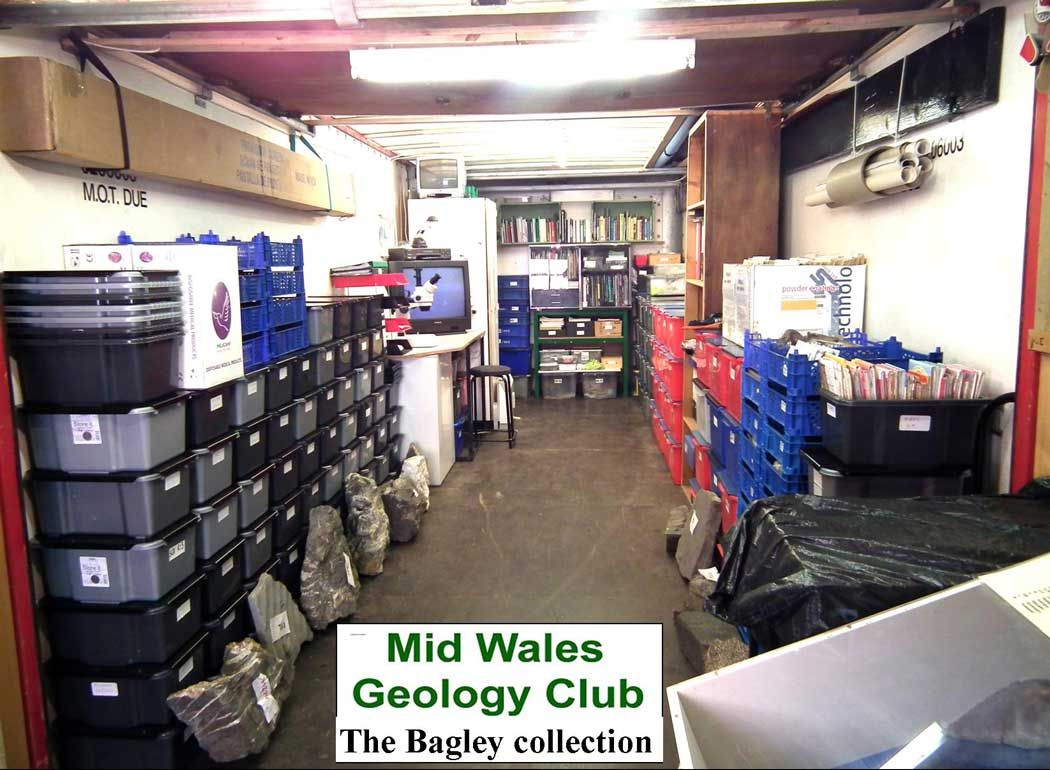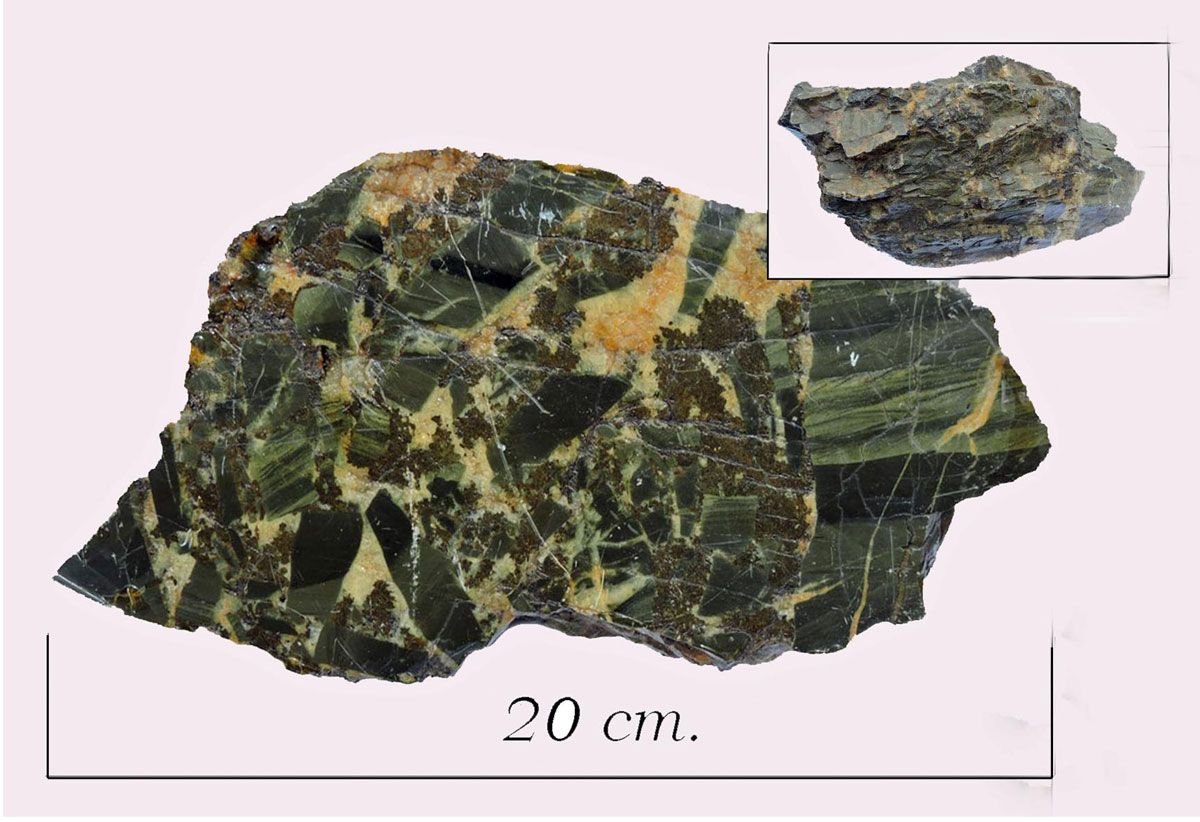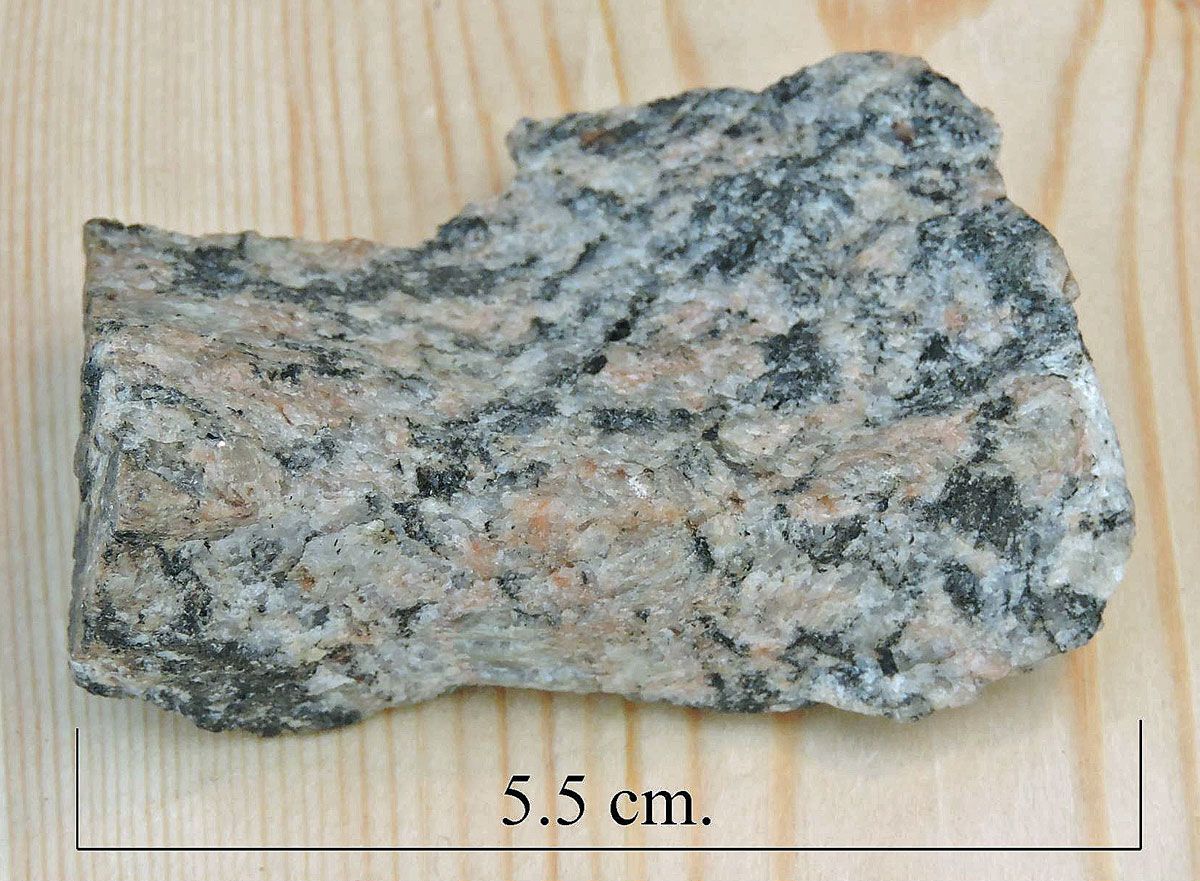
Augen gneiss. Easter Ross,Scotland.
Augen gneiss is a medium to coarse grained metamorphic rock composed of mainly quartz and feldspar with smaller amounts of mica. The especially large megaclasts of feldspar are called "augens" which is German for eyes. Gneiss is formed by high temperature and high pressure action on formations of igneous or sedimentary rocks. This specimen was collected from Easter Ross in the Scottish highlands.
